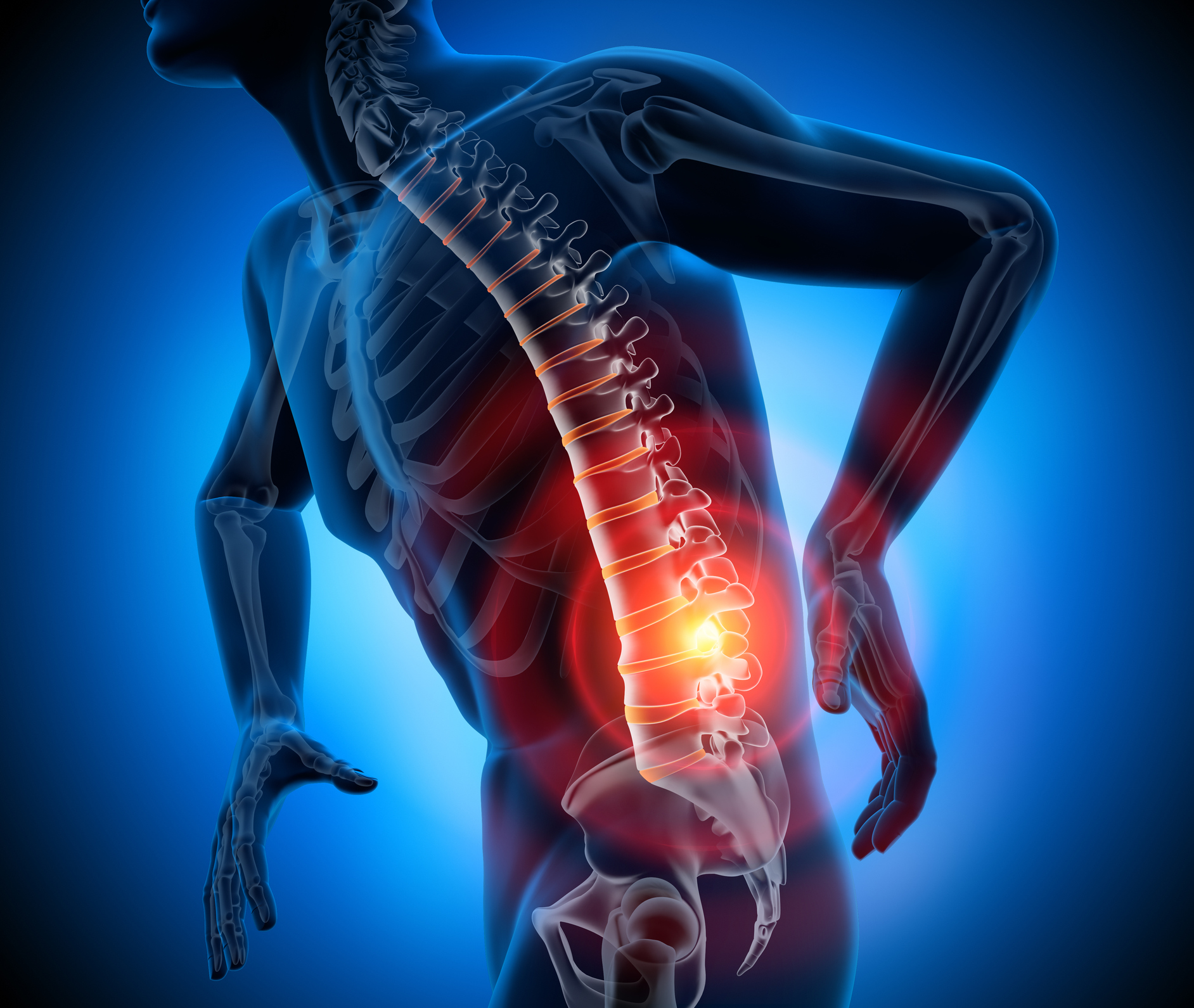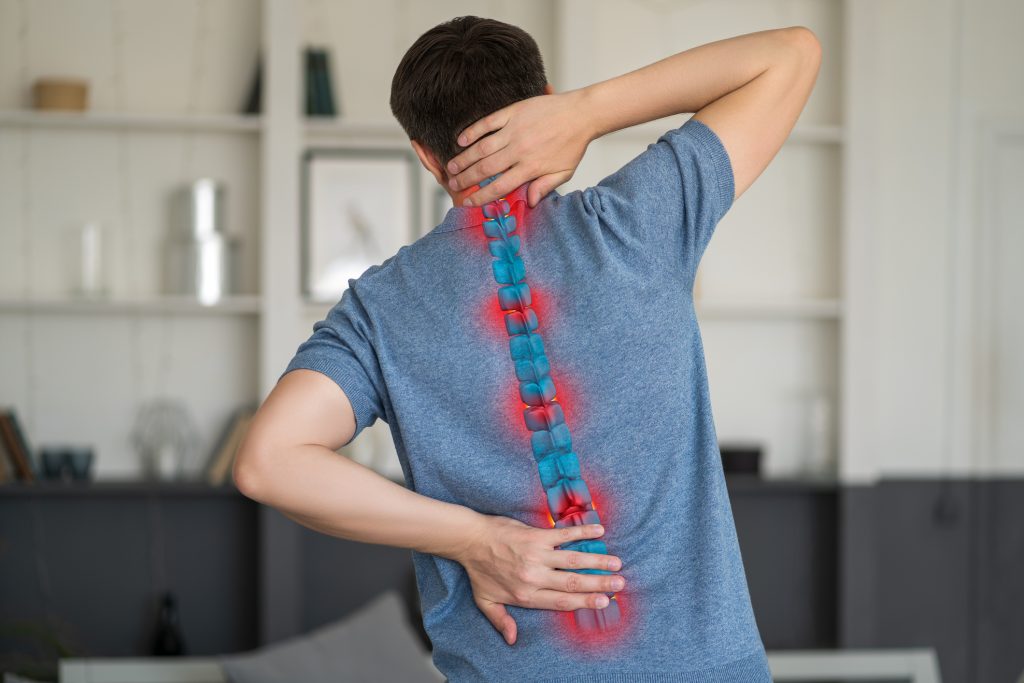Chronic Back Pain: Common Causes and How to Treat Them
Updated:

Back pain is one of the most common health complaints worldwide, and for many people, it becomes a persistent issue that affects their daily life. Chronic back pain is typically defined as pain that lasts for 12 weeks or longer, even after the initial injury or cause has been treated. Persistent back pain following an injury can mean underlying wear and tear (or osteoarthritis) that has been creeping up without symptoms suddenly starts causing trouble. This is very common!
Understanding what might be causing your chronic back pain is the first step toward effective treatment and long-term relief. In this article, we’ll explore some of the most common causes of chronic back pain and the treatment options available.

1. Herniated or Bulging Discs
What it is: The spine is made up of vertebrae cushioned by discs. When one of these discs becomes damaged, it can bulge or rupture, pressing on nearby nerves and causing pain. Undiagnosed (and therefore untreated) trapped nerves are one of the most common problems that we see at SpineArt which we can help with!
Symptoms: Sharp, constant aching or shooting pain, often radiating to the legs (sciatica), numbness, or weakness.
Treatment Options:
- Physiotherapy
- Anti-inflammatory medications
- Nerve root block injections
- In severe cases, surgical intervention such as microdiscectomy or percutaneous discectomy.
2. Degenerative Disc Disease
What it is: As we age, the discs in our spine lose hydration and flexibility, making them less effective at cushioning the vertebrae. Discs can then fail in compression and discs particularly hate twisting forces!
Symptoms: Persistent aching lower back pain with episodes of acute pain, stiffness, or flare-ups during movement, prolonged sitting or heavy lifting.
Treatment Options:
- Pain management with medications
- Core-strengthening exercises such as the plank, pilates or yoga
- Cardio exercises such as cross-trainer, swimming or cycling
- Lifestyle changes (weight loss, posture correction, workstation modification)
- In advanced cases, spinal fusion surgery or disc replacement surgery in the neck
3. Spinal Stenosis
What it is: A concentric narrowing of the spaces within your spine where the nerve roots run due to longstanding degenerate changes. This can put pressure on the spinal cord (in the neck) and nerve roots in the lumbar area. This tends to occur in older people.
Symptoms: Back and leg pain when walking or standing, numbness or weakness and difficulty walking or maintaining balance due to a sensation of not being sure where the legs are! Leaning forward when walking (typically over a shopping trolley) makes the symptoms easier. People then make a habit of leaning forward when standing or walking and often notice this.
Treatment Options:

4. Osteoarthritis
What it is: The global gradual wear and tear of the spine and facet joints, often resulting in inflammation, stiffness and pain.
Symptoms: Stiffness in the back, aching and sometimes sharp pain that worsens with activity, limited range of motion. This is sometimes limited to the back itself but can refer (travel) into the buttocks or down the legs mimicking a trapped nerve. This is an important area of diagnosis that an expert can help you with to get the right treatment.
Treatment Options:
- Over-the-counter pain relievers
- Physical therapy to strengthen supporting muscles and provide symptom control (massage, heat treatment, trigger point therapy)
- Chiropractic treatment to manipulate the spine
- Facet Joint injections for inflammation control and long-term pain relief
- RF Ablation (Facet Rhizolysis). This is a minimal access procedure where the tiny pain fibres to the worn facets are targeted and defunctioned using a radiofrequency (RF) probe. It is done as a day case with good results.
5. Sacroiliac Joint Dysfunction
What it is: The sacroiliac joints connect the base of the spine to the pelvis. Inflammation, functional misalignment or dysfunction (abnormal motion under load) in this area can lead to pain.
Symptoms: Pain in the lower back, buttocks, groin or thighs, especially when standing up from a chair or climbing stairs. Expert opinion is often required to tell the difference between low back pain and sacro-iliac pain because the underlying cause and treatment is completely different.
Treatment Options:
- Manual therapy or chiropractic adjustment
- Physiotherapy or stabilising exercises
- Targeted sacroiliac joint injections – very effective for long term relief
- RF Ablation of the sacroiliac pain fibres (see above)
- Sacro iliac joint fusion in severe unremitting cases (rarely needed)
6. Poor Posture and Sedentary Lifestyle
What it is: Long periods of sitting, especially with poor posture, can put strain on spinal structures (discs) and muscles.
Symptoms: Dull, aching pain that worsens throughout the day. May also be in the thoracic spine.
Treatment Options:
- Posture correction
- Ergonomic workplace adjustments
- Regular movement and stretching throughout the day
- Core and cardio exercise with improved fitness
When to See a Spinal Consultant
If your back pain persists for more than a few weeks, interferes with daily activities, prevents exercise or sporting activity, or is accompanied by symptoms like numbness or weakness, it’s time to consult a spine specialist.
Specialist Care at SpineArt
At SpineArt, our experienced spinal consultant Mr Dan Fagan specialises in diagnosing and treating chronic back pain using a personalised, evidence-based approach. From diagnostic scans to advanced injections and surgical solutions, we offer comprehensive care across County Durham, Leeds, Harrogate, York, the wider Yorkshire region and Teesside.
Whether you’re dealing with degenerative disc disease, spinal stenosis, or any other long-term back issue, we’re here to help you regain control and live pain-free. Book a consultation with Mr. Dan Fagan today and take the first step toward lasting relief.








